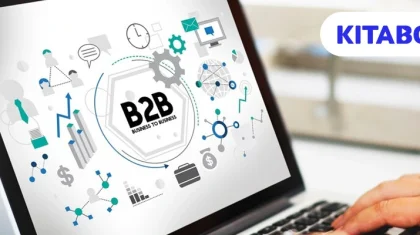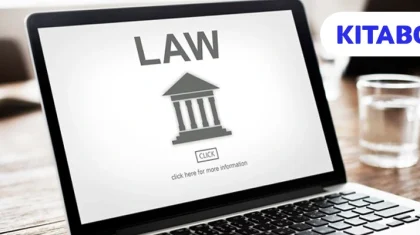
10 Effective Strategies to Prevent eBook Sharing: How to Protect Your eBook from Sharing
We live in the digital era, where information flows freely and can be accessed in minutes. Technological advancements make sharing information easy but can lead to unauthorized distribution and piracy. eBook sharing not only undermines the hard work and creativity of authors and publishers but also results in significant revenue losses.
As the popularity of digital content continues to soar, so does the concern over eBook piracy, making it imperative for content creators to implement effective strategies to safeguard their intellectual property. This is where digital publication platforms like KITABOO play a prominent role. It provides unique cloud-based distribution and DRM encryption, meaning readers can enjoy your eBook online or offline with secure access, always protecting your intellectual property.
Learn how to prevent eBook sharing and fortify your eBook defenses against piracy.
Table of Contents
Understanding eBook Sharing
eBooks are increasing in popularity, and the market is poised to grow to $1.2 billion by 2027. However, piracy and illegal distribution of eBooks make a considerable dent in this industry.
Online piracy causes a staggering annual loss of $300 million in publisher income, and 26.8% of all piracy traffic goes to publishing and eBooks.
Does Copyright Protect eBooks?
A myth is prevalent among the writing and reading community that only physical copies of a book can be Copyright protected. However, this is not true, and every eBook is protected under the copyrights act. It doesn’t matter if your book is in a physical or eBook format.
Unfortunately, even if your work is legally protected, it won’t deter people from distributing it without your permission. So if the law isn’t enough, how can you protect or prevent eBook sharing? That’s where these simple yet powerful deterrents come into effect.
10 Ways to Prevent eBook Sharing
Now that we know just how crucial it is to safeguard and prevent eBook sharing, here are ten powerful strategies to help you protect your work.
1. Add Watermarks
Adding watermarks to your digital content is one of the first lines of defense against eBook piracy. This needs to be discreet so that your readers can continue reading the content of your book while visible enough to act as a deterrent for potential pirates.
The watermark should ideally contain the buyer’s name, email address, or order number. By embedding personalized watermarks in each copy, you can create a traceable connection back to the original purchaser, which is a powerful deterrent to sharing or copying the eBook.
2. Acquire DRM Protection
In addition to personalized watermarks, it is crucial to have Digital Rights Management (DRM) software to help you against unauthorized distribution.
The eBook files are encrypted, and usage restrictions are imposed by the DRM software, such as limiting the number of devices on which the eBook can be accessed or copied. This prevents the file from being easily shared with others. Such features are effectively adopted by KITABOO which helps in protecting the eBooks seamlessly.
While some readers might find DRM restrictive, it remains one of the most effective methods for content protection.
3. Convert Files into PDF or ePub Formats
Another simple yet effective strategy is converting your eBooks into widely distributed but non-editable formats like PDF (Portable Document Format) or ePub (Electronic Publication).
PDFs, for example, provide consistent formatting across various devices, making them less prone to alteration and sharing. ePub is another popular format that allows for reflowable content, adjusting to different screen sizes and discouraging sharing since the layout might be affected.
By opting for these formats, you discourage the casual sharing of your eBooks.
4. Password Protect eBooks
Another powerful line of defense in preventing eBook sharing is password protection. When allowing users to download your eBook, get it password protected or have a license key, which will work only for the specific user.
Although this is not a foolproof option (since users can still share their passwords with others), it helps limit the file from being widely distributed.
5. Get Customers to Establish User Accounts
You can have protected eBook sharing or downloading options like password protection or watermarks. By encouraging users to create user accounts on your platform to access your content, you establish a direct relationship with your reader and create exclusive rights. This ensures that the illegal sharing of eBooks is minimized.
6. Use Credible Services to Distribute eBooks
eBook piracy and sharing are not easy to stop, so it is essential to make powerful allies. So, opt for reputable and secure eBook distribution services that prioritize content protection. You can even use distribution platforms like KITABOO, which can easily integrate with your existing LMS or platform. Thus, you can easily sell eBooks on your store and benefit from delivering digital content on multiple devices while protecting it.
These platforms often employ robust security measures like DRM integration, secure encryption, and user authentication. By partnering with trusted services, you gain peace of mind knowing that your eBooks are safe, minimizing the risk of unauthorized sharing.
7. Limit Downloads Based on IP Address
Taking a proactive approach to prevent mass distribution, you can limit the number of downloads based on IP addresses. By setting download restrictions, you discourage bulk downloads from the same IP, a common method eBook pirates use to share content quickly.
While this approach may not eliminate sharing, it can discourage large-scale piracy and make it more cumbersome for pirates to distribute your eBooks widely.
8. Establish Copyrights for Your Book
Copyright laws are always available to help creators protect their intellectual property and make it difficult for pirates or unauthorized distributors to share your eBook without consent. Familiarize yourself with the copyright laws of your country, and make sure that you add a disclaimer in your eBook for unauthorized copying or distribution of your eBook.
This step is crucial, as should you encounter an instance of unauthorized sharing or piracy, your copyright registration strengthens your position. It enables you to take legal action against the perpetrators.
9. Monitor Web Activity
Vigilance is crucial in the digital landscape; regularly monitor web activity, social media, and eBook-sharing platforms for any signs of unauthorized distribution. Conducting periodic searches using specific keywords related to your eBook can help identify potential instances of piracy.
Alternatively, you can set up a Google Alert for your eBook. This helps you get notified each time your specific title pops up on the internet and monitors illegal activities.
10. Remove Content from Third-Party Sites
In the unfortunate event that your eBook appears on unauthorized third-party websites, take immediate action to have it removed. Reach out to the site administrators or hosting services with clear evidence of copyright ownership and request the removal of the infringing content.
Many platforms have procedures for dealing with copyright infringement and often cooperate in removing pirated material. If this approach doesn’t work, you can take legal recourse against any website illegally distributing your work.
Also Read: 7 Effective Ways to Combat eBook Piracy in Publishing
Conclusion
With these formidable strategies in your arsenal, you are ready to defend your eBooks like a true content warrior. While these are a great starting point to prevent eBook sharing or making it difficult, it is only the beginning.
Preventing your eBook from being shared or pirated is always about staying one step ahead of the pirates or illegal distributors. The best way to do this is by working with eBook publishing houses that leverage tech-enabled solutions and procure Digital Rights Management (DRM) software to protect the eBook.
Companies such as KITABOO utilize secure cloud-based distribution to ensure that your content is both encrypted and protected by DRM. This means that it can only be accessed using unique access codes. So if you need a Digital Publishing Platform to protect your eBooks, check out the details and request a demo to understand all the functionalities in-depth.
Contact our expert team to learn more.
To know more, please write to us at contact@kitaboo.com
Suggested Reads:
- Top Benefits of Using Digital Textbooks in Education
- Are e-textbooks More Affordable Than Physical Textbooks?
- 6 Common Challenges Faced By Publishers
- 10 Reasons Why Online Learning is Better than Classroom Learning
- Future of Digital Media and Content in Education
- How to Create Interactive Employee Training Modules
- Converting PDF to ePUB
- The Benefits of eBooks for K12 Students with Disabilities
- What is an animated ebook creator and which are the best ones
- Creating Interactive Training Modules
Discover how a mobile-first training platform can help your organization.
Kitaboo is a cloud-based platform to create, deliver & track mobile-first interactive training content.



